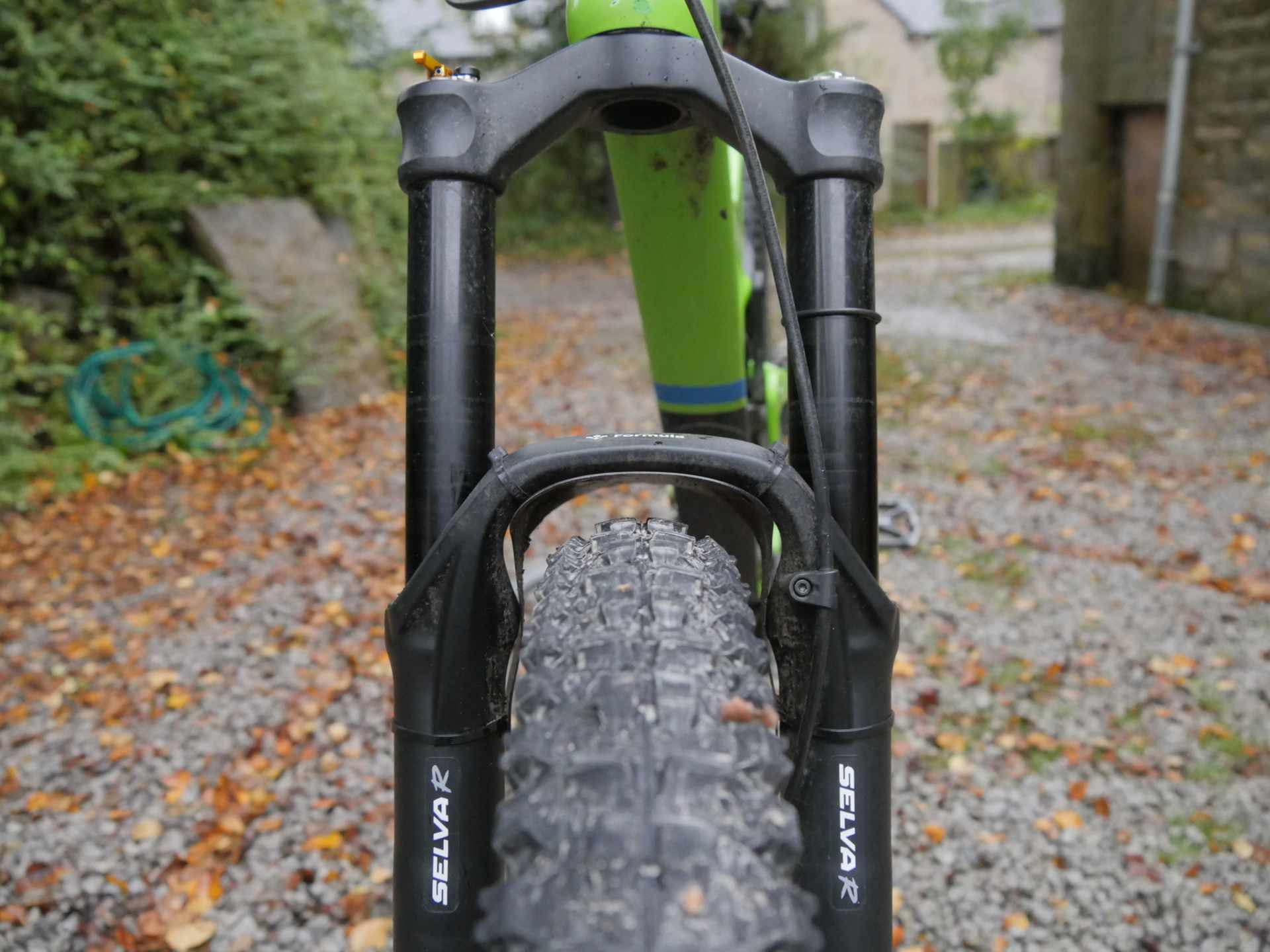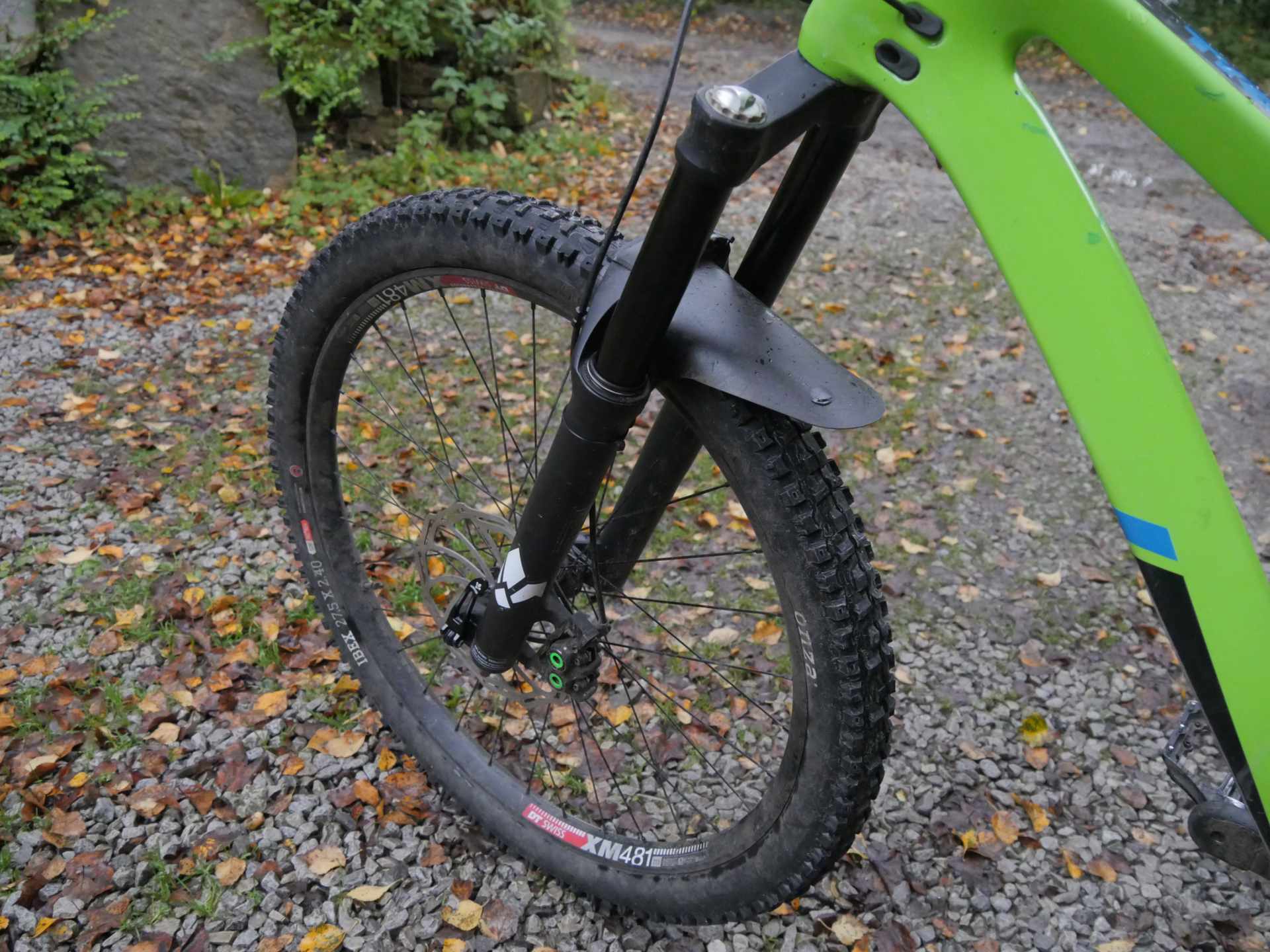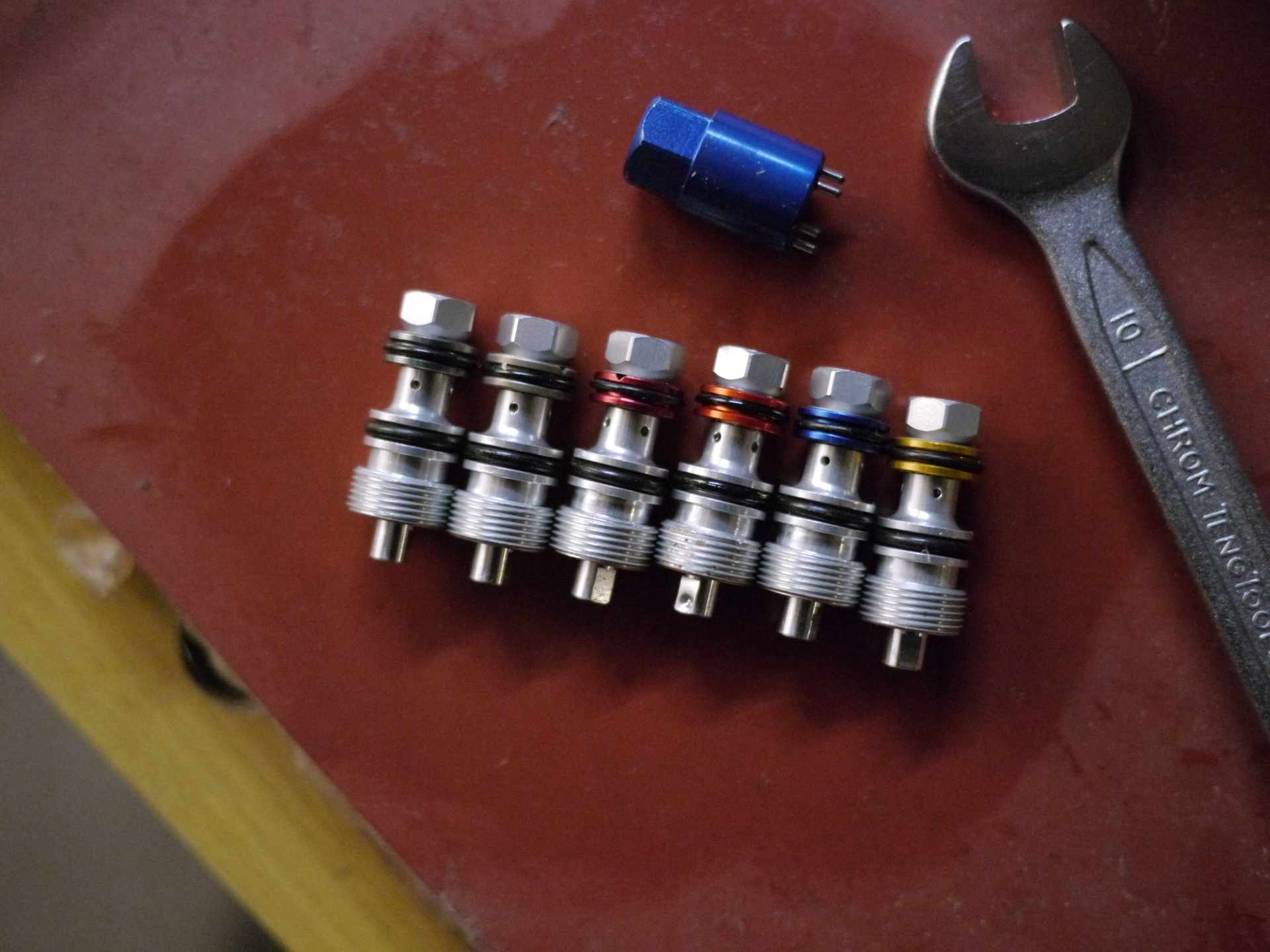David rides the highly adjustable Formula Selva R fork. Will he get tweak fatigue, or find his perfect setting for every trail?
A little under three years ago, I first rode Formula’s 35 fork. At the time, it was the best fork I’d ever ridden, and has remained a favourite. In particular, due to a small negative coil spring at the bottom of the air spring, it had exceptional small bump compliance, which translates into greater accuracy. Formula hasn’t slouched since, and the Selva R is an up to date, super-tunable air fork originally developed from the same internals as the 35.
- Price
- Fork: £1210.
- CTS valves: £48 individually, £183 for pack of all seven valves with tool.
- Weight: 1936g

The three most obvious changes to the design for the Formula Selva R, are: The negative spring is now an adjustable air spring rather than a coil spring, they’ve introduced more valves for their CTS compression damping system; and lastly, they’ve introduced foam Neopos volume spacers. If any of that’s baffling for you, don’t worry, we’ll get into it below.
Setup
There are two versions of this fork available, one of which can be adjusted in 10mm increments to have travel anywhere between 130-160mm, and an extended one that can be set to 160mm or 170mm – but not below 160mm. Travel adjust is done by pulling the fork apart and adding spacers, so not a trailside job. This one shipped set to 160mm and went on a frame designed for that.
In the box, there’s also a Formula shock pump, travel spacers, and a socket for the air top cap. Also one Neopos volume spacer, but that’s already inside the fork. Rather than just explain my setup, it’s best we take a quick tour.
At the bottom of the right leg is the rebound adjuster, and at the top are all the damper settings. The blue dial is compression damping, which also conceals the swappable CTS valve. The gold lever is the lockout lever, which has just two settings: open or closed. The black dial, adjustable by an allen key, is the adjustment for how soft you want the lockout, ranging from fully rigid for mashing up tarmac, to a much softer setting suited to technical climbing.
Moving over to the spring side, there are two valves. The silver cap at the top is for the positive air spring; a bronze cap at the bottom is for the negative air spring. That spring pulls the fork down into its travel a tiny bit, helping it overcome stiction and start moving a little faster. That sensitivity is by far the most noticeable thing you can see and feel when riding a Formula fork for the first time.
Both pressures are set according to a chart on the back of the leg, always with the positive chamber first. Helpfully, the correct sequence is on a label at the bottom of the leg. If you need to tweak the positive, it’s important to first depressurise the negative chamber, or it’ll alter the reading of the positive one.

With a 79Kg kitted up weight, I started with 80PSI in the positive chamber and 100PSI in the negative. The adjustment range of the negative spring can be up to +10PSI from the chart value if you want it to feel softer, and up to -10PSI from the chart value if you want it less eager to jump into the travel. I mostly kept it at the recommended setting for this test.
Moving on to those CTS valves: most forks, if it’s possible to change the damping tune you’ll need to remove lowers and possibly dismantle internals. With Formula’s CTS system, there’s a set of tiny valves (available separately, natch) that each have different compression tunes. Changing them is a five minute job, needing a special tool plus a 10mm spanner.
In the other leg, unlike other fork manufacturers who tend to use clip or screw on volume spacers under the air top cap, Formula’s Neopos spacers are foam cylinders that just drop into the air chamber.

Remove compression knob and o-ring 
Compression knob removed 
Using CTS tool + 10mm spanner, unthread CTS valve 
Valve removed 
Thread in new valve, replace with CTS tool and 10mm spanner 
Replace o-ring and compression knob, tighten grub screw
All told, there are six different ways for you to tweak and alter the behaviour of a Selva R. Formula claims ‘There is no setting you cannot reach’, so I set out to test that.
Riding It
Initially, I kept the gold CTS valve in, which is the standard one, left the Neopos spacer in, and used the stock pressures. For the first ride, I transferred my rebound and compression settings over from the Formula 35 I’d ridden, but knew they wouldn’t be my eventual settings as they’re from a fork set 30mm shorter. There was a lot of tweaking to come.

After a few quick tests I set rebound nine clicks (of a twenty or so click range) from fully open, and left it there.
The negative spring, coupled with the work Formula has done on the chassis to keep everything stiff and parallel, eats up all sorts of chatter, keeping rubber on the ground. Like the 35 before it, I found this an unusually precise fork, letting me put that contact patch exactly where I wanted it and try my luck a little more with sketchy lines.
Terrain ranged from my local trails around Calderdale, to a week of steep off piste runs, rocky switchbacks, and bike park trails around Les Arcs. The bulk of my experimentation was done around the CTS valves Formula also sent, of which I ran the gold, the orange, then the green valves, in that order.
Working on the Selva, it’s complex enough to make it critical you do things in the right order, and only change one thing at once. Otherwise you could easily get lost in the options available. Also worth noting is that with no pressure in the negative spring, the stanchions are 170mm long, so it quite often it looked like I was using less travel than I actually was.
At first, with the standard gold CTS valve, the forks seemed a bit too keen to get into the travel. Increasing the positive pressure and slowing down the negative by putting slightly less in fixed this somewhat, but didn’t feel perfect for aggressive midsummer riding on fast trails.
The more progressive orange valve went in, then to the Alps. With the fork pressurised to use full travel on most trails, it could get a bit brake divey on steep descents. I minimised the negative spring pressure and gradually turned the compression damping up through about two thirds of the range, then it did fine for the week.

Back at home, I popped the green valve in (‘Race with support’), and started at the recommended-for-me 80/100 pressures. This valve had the best initial feeling for me, settling any brake dive on steeps without having to add compression damping at all. It also gives exactly the kind of firmness I’d want for repeated bike park runs.
It still left some travel unused though. Gradually, I increased compression and dropped pressures by 5PSI for each descent on a quick local loop, taking in four hills. Eventually I got the fork to wallow unpleasantly, but that ride revealed a wide range of settings that could work with the valve.
Following that, I removed the Neopos spacer to see how much of a difference it would make. I used full travel more easily, but much more noticeable was how much chatter the Neopos had got rid of, so back in it went. I’d tried one in the 35 previously and only noticed a small difference, but as Wil found reviewing them, with more travel it’s more noticeable. There’s some weird physics going on there.
Another thing that worked well with the green valve was matching its racing intentions by firming up my shock a little, pushing me a little more onto the bars, encouraging more fork travel.
Eventually the weather broke, trails turned to mud, and I went back to the gold valve and default pressures to see if anything I’d learned transferred. Contrasting with my first experience on dry trails, with zero to four clicks of compression this gave a really good, comfortable tune for mushier, slower conditions.


The Formula Selva R is a stiff, unusually precise fork. It’s also decidedly for methodical tinkerers. Between the air spring, negative spring, rebound damping, compression damping, CTS valves, and Neopos spacers, Formula isn’t kidding; you can do pretty much anything you want to the spring curve. Or get a bit lost if you’re not careful.
Riding the Formula 35 a few years ago, I hadn’t experienced anything else with comparable small bump compliance. All of that translates into traction and accuracy, and it’s all still there in the Selva R. A few other forks have been catching up, but for me Formula is still on top.
Overall

The Formula Selva R is precise, plush, and slightly complicated. I’ve found a range of good settings, and it feels like there are more to discover. If you’re more of a fit-and-forget rider, that may not suit you. If, like me, you enjoy thinking about and tinkering with suspension setup, this could be the all singing, all dancing fork of your dreams.





















Is there a more intensive test coming?